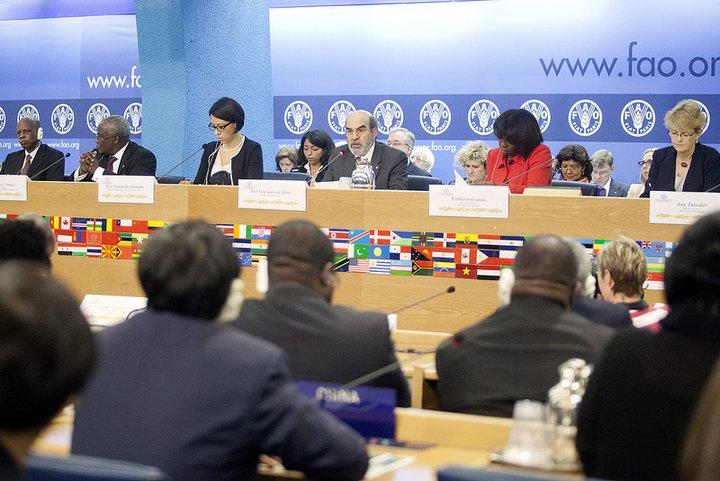Blog How agricultural biodiversity can help prevent food loss - A focus for World Food Day

Bioversity International Director General, M. Ann Tutwiler, blogs about why she chose to highlight the use of agricultural biodiversity to stem pest and disease loss as part of events to mark World Food Day.
Yesterday, as part of celebrations for World Food Day, I spoke at the Food and Agriculture Organization of the UN (FAO) about how we can reduce food waste and loss in developing countries. Last year at the Rio Summit, the UN Secretary General announced the Zero Hunger Challenge. One of the five targets is zero food loss; the other is more sustainable production systems. Agricultural biodiversity offers a way to achieve progress towards both goals simultaneously.
Damage inflicted by crop pests and diseases is a major contributor to food loss. Almost one-fifth of all food grown is lost in this way which means not only mean less food and lower farm incomes —lost food also represents lost labour, energy and water.
These losses are particularly devastating to the 1 billion people in rural areas of developing countries who rely on low-input agriculture to meet their household needs of food and income.
Research by Bioversity International over the last 15 years has shown how science can help farmers already growing diverse plant varieties to use agricultural biodiversity in a more targeted way to reduce pest and disease loss. Let’s look at a couple of examples.
Beans - Uganda and Ecuador
Common bean is one of the most important plant-based protein sources for the people of East Africa and Latin America. In East and Central Africa, common bean serves as an important food and cash crop, and plays an important nutritional role providing around 23% of protein in diets - in Ecuador the figure is about the same.
In Uganda, bean yields have consistently remained at 20% lower than the potential yield, in particular because of loss from pests and diseases. Losses due to pests such as bean fly and diseases such as Angular Leaf Spot (ALS) and Anthracnose can be as high as 25% in some areas of Uganda, but we have seen that when farmers’ groups there grow three or more bean varieties in their fields they experience significantly less damage to their crop than households with few varieties, particularly in years when there is high disease incidence.
In Ecuador, the picture is somewhat different. Pest and disease damage to common bean grown by smallholder farmers is low — less than 3% in 2012. Farmers use little or no pesticides but instead plant traditional common bean varieties in mixtures — almost 90% of beans sown in Ecuador are traditional varieties. Working with farmer groups in trials where the bean mixtures were enhanced by adding more varieties to the mixture than normally used resulted in yields that doubled, and in some cases tripled — exceeding yields from both normal mixtures and commercial varieties sown that year. In addition, the enhanced bean mixtures also withstood low rainfall. As a result, the number of farmers wanting to try enhanced bean mixtures tripled after the first year.
Barley in Morocco
Powder mildew is a disease affecting barley losses worldwide which can reach up to 30% in North Africa, although average losses are about 10%. When researchers working with smallholder farmers on using traditional barley varieties found some traditional varieties to have more or equal resistance than the recommended modern or improved ones, the farmers commented: “finally the extension services are thinking about using and improving our own local varieties in their experiments”.
So what do these examples tell us?
Agricultural biodiversity can be a powerful and sustainable tool for reducing the incidences of pests and diseases in developing countries. Using agricultural biodiversity also increases the adaptive capacity of crops to resist new pests and diseases that might enter farming systems in the future. Yet not enough research is being dedicated to learning how to use these techniques and how to integrate them into farming systems. Research and development agendas also need to give more importance to conserving the on-farm crop genetic diversity that we need to help combat pests and diseases to ensure this natural resource is not lost.
Agricultural biodiversity is not the only solution but we have identified where diversity can be part of the solution to reduce food loss in a sustainable way if we are to meet the Zero Hunger challenges - something to reflect on as we mark World Food Day 2013.
M. Ann Tutwiler
